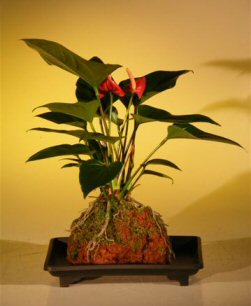Flowers can help beat the blahs in every corner of your house
Everyone should find a way to beat the blahs. For me, the best medicine to cure the post-holiday blues is to hit the post-holiday sales - in the plant department! And not for the red and green, the twinkling little white lights and candles. I’m on the prowl for pinks and yellows, purples and oranges. You can’t have the blahs when surrounded by the scent and colors of spring.
Anticipating the post-holiday rush, growers start seed in time to supply colorful flowering houseplants to the winter market. A quick round of local garden centers and supermarket florists revealed an abundance of everything, with promises of more to arrive any day now. Tropical plants, orchids and ferns, cyclamens, kalanchoes, bulbs already in bloom or set up ready to go - all crying "Buy me!"
What really grabbed my attention was a Home Depot display of primroses, trays of them piled on top of each other, their rich colors shining like jewels against the gray walls and floor of the warehouse store. These little dears were demanding to be bought, and not just one at a time, but by the supermarket cartload! They made me smile. I wanted one of each color at least and I splurged!
The wonderful thing about these little plants is that you can tuck them in everywhere, beating the blahs in every corner of your living space. If you provide the basic care they desire most of the time, you can move them around to cheer you up where you most need cheering. From the bathroom counter to the top of your laundry machine, to the top of your bookcase, beside your computer - they provoke a smile every time you look! And providing their basic care is easy during winter months.
They like to be cold, and will do well in a cool setting. Think of them as early spring plants, happy in damp soil and cool, misty air. If you like to drop the temperature of your house at night, your primroses will be extra happy houseguests.
Anticipating the post-holiday rush, growers start seed in time to supply colorful flowering houseplants to the winter market. A quick round of local garden centers and supermarket florists revealed an abundance of everything, with promises of more to arrive any day now. Tropical plants, orchids and ferns, cyclamens, kalanchoes, bulbs already in bloom or set up ready to go - all crying "Buy me!"
What really grabbed my attention was a Home Depot display of primroses, trays of them piled on top of each other, their rich colors shining like jewels against the gray walls and floor of the warehouse store. These little dears were demanding to be bought, and not just one at a time, but by the supermarket cartload! They made me smile. I wanted one of each color at least and I splurged!
The wonderful thing about these little plants is that you can tuck them in everywhere, beating the blahs in every corner of your living space. If you provide the basic care they desire most of the time, you can move them around to cheer you up where you most need cheering. From the bathroom counter to the top of your laundry machine, to the top of your bookcase, beside your computer - they provoke a smile every time you look! And providing their basic care is easy during winter months.
They like to be cold, and will do well in a cool setting. Think of them as early spring plants, happy in damp soil and cool, misty air. If you like to drop the temperature of your house at night, your primroses will be extra happy houseguests.
Want more Indoor Gardening??







